5 Mistakes to Watch Out For When Measuring Mobile App Campaigns
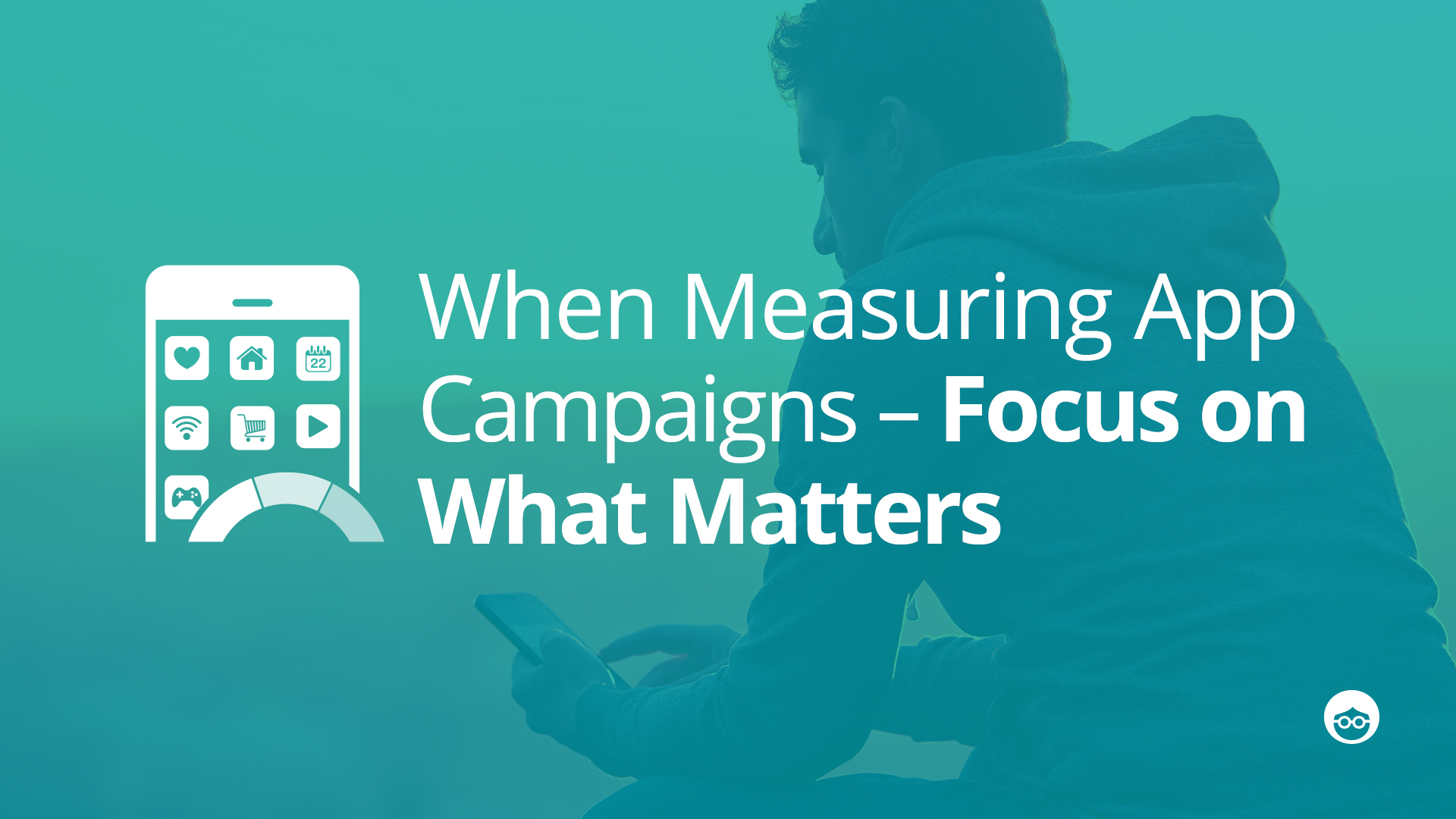
The mobile app industry has proven time and again to be a powerful agent of customer acquisition and a source of massive revenue growth.
The versatility of high-quality user experiences and the overall ease in engaging customers and driving brand loyalty make mobile apps a key channel for businesses. The range of goods and services now being offered is unprecedented, and all of this is consistently available at the tap of a button.
Following the unprecedented rise in mobile adoption, the fragmented mobile space generated from this activity made the transition from the web cookie previously used for measurement more difficult than expected. This, in turn, frustrated app owners and marketers alike.
The good news is that this no longer needs to be the case, given the robustness of mobile measurement (not to be confused with cross-device and omni-channel tracking which remain a significant challenge). In fact, the mobile ecosystem is the most measurable ecosystem ever created because there are multiple persistent identifiers to work with. This means that there is much more opportunity for improving your campaign results.

The following challenges are the most common among app marketers examining gaps in their measured insights, as well as the most easily addressed following the right steps. To make the most of this opportunity and boost your engagement and revenue KPIs, make sure you avoid falling into the following five pitfalls when measuring your next app campaign.
Optimizing on Volume, Not on Value (e.g., Engagement, Retention)
Until recent years, the standard for app marketing success was based primarily on the number of installs a campaign produced. For good reason, scale is necessary for an app’s overall rankings and ASO performance, since it leads to greater organic installs and improved retention. Only 5-6% of installers actually become buyers, though, making it very much a numbers game in order to earn a profit.
Unfortunately, we can’t bring installs to the bank. On top of that, the overwhelming majority of apps available in app stores today are free to download, making in-app purchases and in-app ads, and our ability to measure them, that much more necessary.
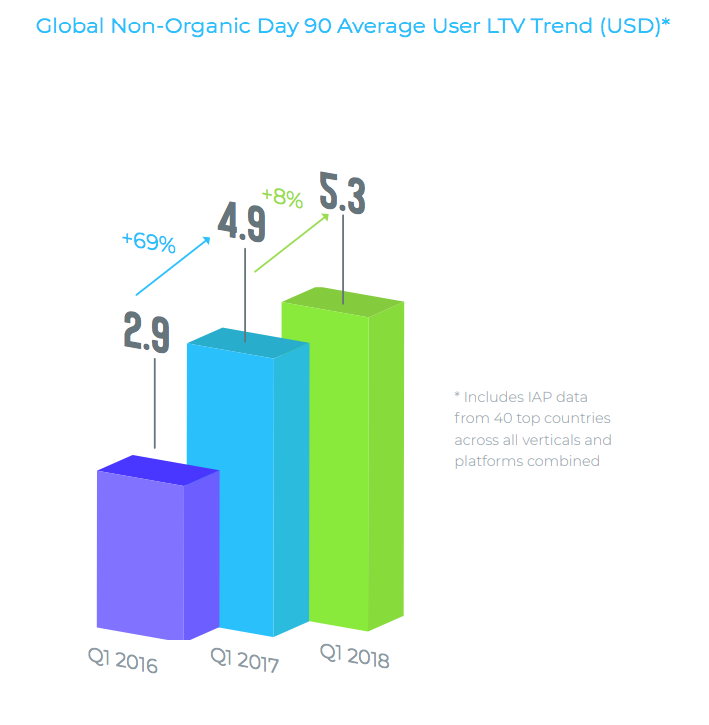
Source: Joint Facebook and AppsFlyer Study, Lifetime Value: The Cornerstone of App Marketing
Despite some knowledge of this fact, many marketers are often either unable to or wary of diving into in-app measurement. In our experience, there are many mobile marketers who are still not measuring engagement, while even less actually measure their app’s revenue and return on ad spend.
On the other hand, as this issue grows increasingly more relevant, many others are starting to dive in deeper in measurement. Inevitably, today, both the vast mobile app landscape and ever-growing user expectations demand that advertising strike a balance between user acquisition and sustaining long-term relationship to maximize their lifetime value (LTV).
For more on the importance of lifetime value in planning your overall strategy, check out our recent joint report with Facebook, Lifetime Value: The Cornerstone of App Marketing.
2. Limiting Granularity in Campaign Parameters (Rich In-App Events)
Hands down, the easiest way to understand the in-app behavior of your app’s highest value users is by granular measurement of in-app events.
Imagine the difference in your eCommerce campaign, for example, if you knew not only that a user added an item to their cart, but also the content type, content ID, price, currency, customer ID, and date. This information combined is commonly referred to as a rich in-app event.
Here’s an example of rich in-app booking event for the travel vertical:
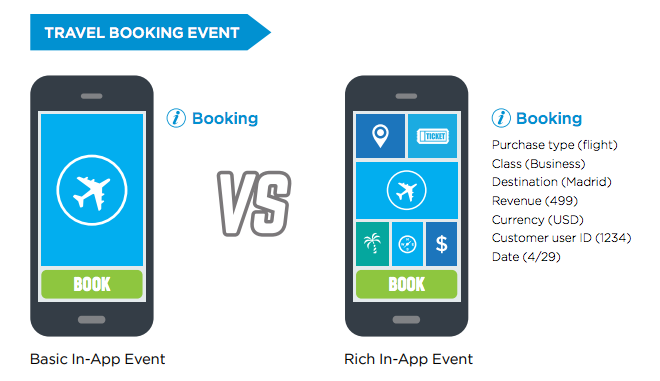
Rich in-app events are relevant for all verticals and can be further broken down according to app and campaign goals. They are best used for three main purposes: to meet specific business goals; to (truly) pinpoint top media sources; and to create lists of advanced audience campaigns such as lookalike targeting and retargeting.
No matter your objectives, not including rich in-app event tracking would be detrimental to your resulting insights, as well as structuring future campaign strategies. With very little effort, rich in-app events can be integrated to give you a real-time play-by-play of each user’s consumer journey and significant power to keep revenue flowing.
3. Partnering With a Non-MMP
While many media sources require only standard tracking links to measure their campaigns, a more select group of networks, known as self-reporting networks (SRNs), require advertisers to partner with mobile measurement partners, or MMPs, in order to measure campaigns.
In other words, only advertisers that work with an MMP are able to follow their users across some of mobile’s largest networks, including Facebook, Google, Twitter, and Snapchat, leaving gaps in campaign measurement for everyone else.
Many marketers understand the need to work with an MMP. However, some still do not recognize the value of an MMP partnership or cannot justify the cost of working with one.
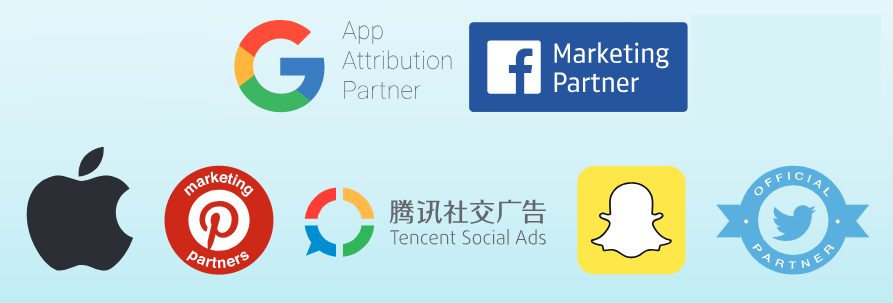
The truth is that MMPs were rigorously chosen by SRNs based on their tech, support, and security capabilities. With access to SRN’s campaign data, their operational superiority will quickly save you far more money than will be spent. What’s more, since some MMPs work with many SRNs and others work with all SRNs, MMP network coverage is so wide that NOT partnering with one is a significant risk.
For example, for some user journeys which involve more than one network to achieve an install, not working with an MMP also means you don’t know that an SRN was the last click and that it should, therefore, be attributed for the install using a last click attribution model. As a result, you would wrongly pay an “assisting” network in addition to the SRN, but, more importantly, have an inaccurate and incomplete understanding of your user’s journeys to your app. Ultimately, this negatively influences your future campaign strategies.
As this example illustrates, ultimately, the right solution, even if more costly, will save you money. You may think you can’t afford it, but the truth is you can’t afford not to.
4. Not Fighting Fraud
It is clear that fraud is prevalent in the mobile ecosystem, but do you know just how sophisticated fraudsters’ efforts have become in their attempt to knock app owners off their feet? In our latest report, The State of Mobile Fraud: Q1 2018, we found that mobile app marketers were exposed to 30% more fraud during the first quarter alone of 2018 compared to the 2017 quarterly average. And let’s talk about the money – again in Q1 2018 alone, app marketers worldwide collectively experienced around $700-800 million in financial exposure to fraud!
Fraud protection is not just important on the marketing side; it enables full transparency with your media sources and allows networks to identify fraudulent traffic and improve traffic quality. In turn, that makes protection against fraud not just a responsibility for the company, but an enterprise-wide effort that must keep up ongoing efforts analyzing data on a significant scale.
With each release of new anti-fraud technology, fraudsters and techniques have evolved, resulting in wave after wave of advanced and often unseen attacks. If ensuring accurate campaign success and limiting wasted budgets through effective anti-fraud protection is not already high on your to-do list, it should be.
5. Not Measuring True ROAS
At the end of the day, a core goal of app marketing is the profitability of their marketing activities. The concept is simple: ad spend for a single user should be less than the revenue generated, or lifetime value (LTV), by that user.
It makes sense, then, that we would track both pieces of that equation, campaign cost and user revenue. According to a data study by Forrester, however, a stunning 67% of app marketers do not, or simply cannot, measure the (true) ROI/ROAS of their marketing efforts, often because of a perceived lack of data.
We are here to say that this is actually completely within reach, you can track each revenue event — whether app download, in-app ad, in-app purchase, and subscription revenues — and connect it to an attribution source. Later, you can look at the cost of acquiring that source and do the math from there.
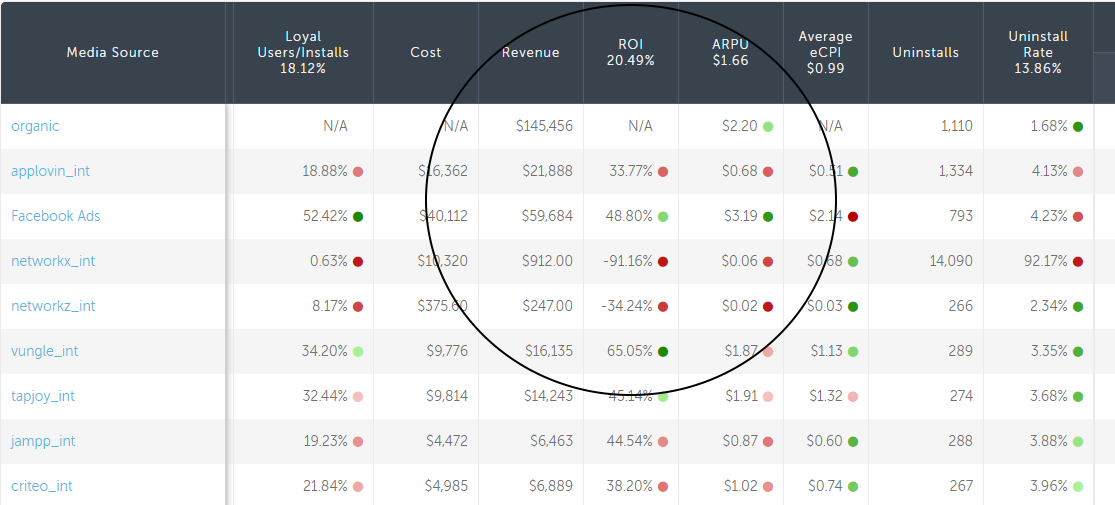
For more information about staying on top of your ad spend and user revenue, see our Complete Guide to Mobile Marketing LTV and ROI.
To sum it up, mobile measurement has traditionally been a cause of campaign difficulty for app marketers. However, by shifting your focus to value-based, granular level insights; investing in MMP partnerships and effective anti-fraud protection, and calculating your true ROAS, you will easily move past your measurement problems to focus on what matters.













